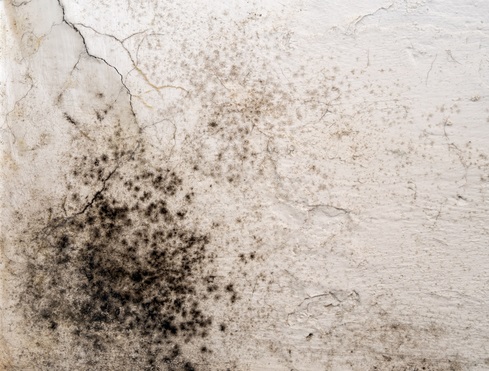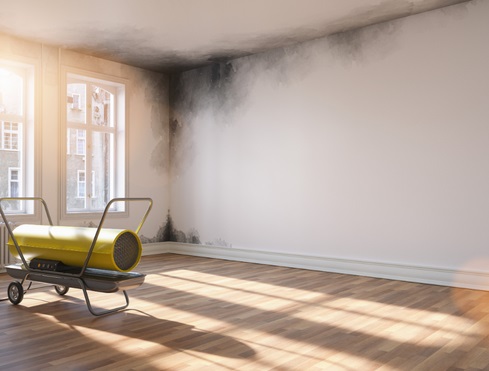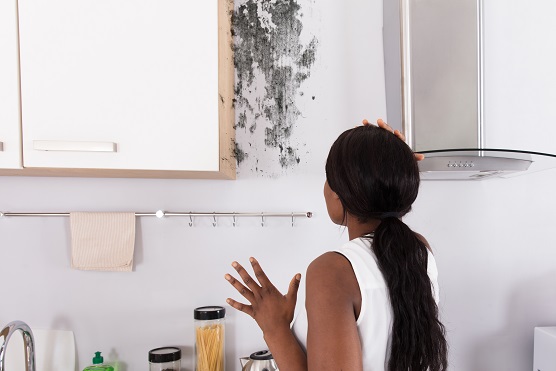We want our homes to be cosy sanctuaries, so damp mouldy walls are never a welcome sight. Damp, mouldy areas on your walls can be a real pain, and it’s something you want to tackle sooner rather than later.
Treating it can be as easy as applying a coat of waterproof paint, but in some cases it’s best to call in the professionals. So, let’s take a look at how to prevent and treat damp walls so we can help get your home back to its best.
Types of damp
Mould is the common term for fungi — a microorganism which includes approximately 300,000 different species. Even in warm, well-maintained homes, mould growth can happen if the conditions are right for it — especially during colder months.
Damp starts when mould spores (invisible to the naked eye) float through the air and land on moist surfaces. If they have a food source (such as plaster, wood or other materials), along with dark, warmth and air, they can grow. But excess moisture is the key contributing factor for mould growth. And there are different types of damp to look out for, with some being more serious than others.
Rising damp

Rising damp occurs when ground level water rises up into your home. It usually affects basements and ground floor rooms, having bypassed the damp proof course (the layer of waterproof material at ground level).
If left untreated, it can cause other issues such as cracked plaster and lifting wallpaper, so it’s important to deal with it sooner rather than later. Call in a professional who’ll judge the severity and scale of the problem, and they’ll talk you through the options.
Penetrating damp

Also known as lateral damp, penetrating damp is usually the result of water finding a way from outside into your home. But it can also be the result of leaky pipes behind your walls. Signs of penetrating damp include damp patches on walls and ceilings, damp staining on external walls, flaking or peeling paint, crumbly plaster, and black mould. And finding the source of the moisture will tell you the best way to fix it — and whether you’ll need to call someone in to help.
Condensation

Condensation forms in droplets on a cold surface when it meets humid air. You see it on your windows on cold mornings when your heating is turned on. And the damp from condensation is often found on or around windows, as well as in the corners of a room.
It’s the most common form of dampness in our homes and is also the easiest to fix. Try increasing ventilation in the affected area or making sure there’s proper insulation. Both should help reduce condensation and cut the risk of damp becoming a bigger problem.
What are the causes of damp?
We’ve already mentioned a few of them, but here’s some of the ways damp can get into your home.
Excess moisture — cooking, washing, showering and drying clothes creates moisture, which is why good ventilation is important in preventing damp.
Not enough ventilation — homes that lack proper ventilation are prone to damp issues as warm air deposits moisture on any available coldest surfaces, whereas proper air flow carries the moisture outside.
Poor heating — sharp increases in warm air and underheating your home can create condensation problems. More consistent temperatures are less prone to damp problems.
How to tell if you have damp on your walls
There are several common signs of damp to look out for. If you spot any of them, it’s time to take action before they cause problems for your home — and potentially even your health.
Mould and mildew

Mildew is typically white, grey, or yellow and grows on the surface of moist, warm areas. Its texture is fluffy or powdery. On the other hand, mould tends to be green or black, and it usually grows underneath the surface of something that’s wet. Its texture can be fuzzy or slimy.
Walls are damp to touch
If walls feel damp to the touch, it could be a sign of condensation, but it could also mean a more serious damp has penetrated the wall itself. Try improving the ventilation in the area to see if that improves things, otherwise you may need to call in a qualified expert.
Wet or rotten floorboards or skirting boards
Wet or rotten woodwork can be a sign of damp. If it’s under carpet it can be tricky to spot early on — so if you notice a damp, musty smell, it’s worth lifting the carpet to investigate further. Look out for darkened or soft and spongy timber, a cracking or crumbling to the touch, fungus growth or shrinkage.
Stained walls

Watch out for dark staining on your walls. If it’s on an exterior wall, chances are it’s a sign of damp penetrating in through the exterior. If the stains are on an interior wall, mould growth and drywall stains can be a sign of temperature differences between the outside air and the air inside your home creating condensation on surfaces.
How to treat damp
If you do find the dreaded tell-tale signs of damp inside your home, there are different courses of treatment depending on the cause of the problem. Let’s take a look at a few ways to treat damp issues.
Treat penetrating damp
- Repair cracks or damaged walls using a suitable render. Masonry protection cream on the external walls can help prevent rain penetration.
- Remove excess debris from roofs and gutters — rainwater build-up leaks can lead to water seeping into the walls of your home.
- Improve your heating and insulate cold walls.
Rising damp can also occur on the external walls of the building and is usually caused by having a damaged damp proof course.
Treat rising damp
Depending on the thickness of the walls, you can install a remedial damp proof course. Holes are drilled in the mortar/brick and then injected with high concentration Dryzone DPC cream solution. It’s a water-based silicone damp proofing cream (damp proof course) that restricts water movement.
Damp proof membranes are sometimes used to supplement a chemical DPC injection. These membranes can be installed immediately after the injection or repair of a damp proof course. The membrane separates new plaster from existing salts and other contaminants on walls. This should keep everything dry and looking good.
Treat condensation
- Identify the source of the condensation problem.
- Fix ventilation issues and improve air flow.
- For smaller areas such as cupboards, seal up any gaps in the flooring and try a moisture-absorbent gel pack.
- Get a smart heating system that balances the temperature in different areas of your home.
How to prevent damp
So we know that ventilation, a good heating system and a well-insulated home are the best ways to reduce moisture in your home. And with those taken care of, here’s a few other low-cost tips to prevent future damp damage.
- Open windows on dry days to ventilate humid air — and keep them closed when it’s wet and there’s moisture in the air.
- Keep lids on your pots and pans when you cook and keep bathroom doors closed when taking a shower.
- Use thermal or lined curtains to maintain a more even indoor temperature.
- Keep furniture away from outside walls to allow air circulation. Cool areas behind furniture will be high-humidity areas where mould can grow.
And for more tips on heating and boilers, how to book home repairs, and more info on how to keep your house warm in winter, check out our latest articles.
Our blog is loaded with more related articles

Plumbing and heating tips
Easy plumbing maintenance tips
Did you know that the earliest copper piping dates from an Egyptian pyramid built 4,500 years ago? Since plumbing has been arou...
Read more

Plumbing and heating tips
How to keep your house warm in winter
From checking your thermostat to insulating your roof, here's our top tips to keeping your home warm in winter.
Read more

Environmental sustainability
Simple ways to save water at home
For water saving week, we've put together quick ways to save water at home. From leaking taps, too many baths and overfilli...
Read more
